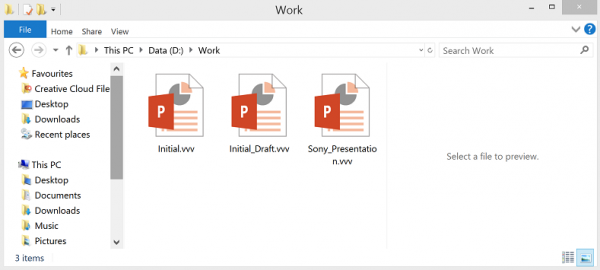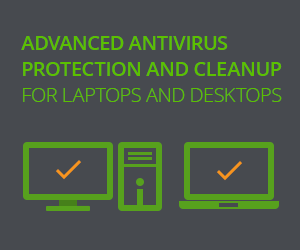Internet community is vividly discussing .vvv files as new version of TeslaCrypt ransomware has been spotted. Unfortunately, it has already made its way to a great number of computers. Victims are desperate to get rid of .vvv ransomware and restore access to their files.
As compared to preceding versions of the virus, .vvv file extension marks the most obvious difference.
Any version of TeslaCrypt ransom virus encrypts data on your PC. Most of the versions change names of affected files appending suffix of three letters. The version under review, obviously, appends .vvv suffix. The previous versions added such strings as xyz, ccc, zzz, aaa, abc. The listing does not pretend to cover all existing strings.
Changing the name with .vvv extension is not a critical issue. Names do not matter. The ransomware encode the contents of the affected files. The encoding is what really matters. Advanced Encryption Standard applies as the data modification method.
Remarkably, this virus may try to disguise itself as CryptoWall ransomware. However, the latter applies totally different encryption method, RSA-2048 (TeslaCrypt applies AES.) CryptoWall also does not add the .vvv suffix to compromised data.
Once the encryption completes, the virus creates a private key. The key is dispatched to remote server. Every folder that contains encrypted files also contains a file that has been created by the ransomware. The newly-created file instructs users on how to pay the ransom and decrypt the data with private key. As compared to previous releases of the virus, the .vvv extension assigns slightly different name to this file that it creates.
The instruction says the user has to pay certain amount in bitcoins. The amount varies from 1.5 to 2 BTC. A victim is required to use TOR gateway when processing the payment. That further increases the anonymity of remote hackers.
Discussion is ongoing as regards the most efficient method of .vvv ransomware removal and affected data decryption. Best practice shall kill the ransomware and completely restore access to all the files hit by the virus.
Automatic removal of .vvv file ransomware
The benefits of using the automatic security suite to get rid of this infection are obvious: it scans the entire system and detects all potential fragments of the virus, so you are a few mouse clicks away from a complete fix.
- Download and install recommended malware security suite
- Select Start Computer Scan feature and wait until the utility comes up with the scan report. Proceed by clicking on the Fix Threats button, which will trigger a thorough removal process to address all the malware issues compromising your computer and your privacy.
Unlock files encrypted by Crypt.pko virus
.vvv file virus represents a unique category of malicious software whose attack surface reaches beyond the operating system and its components, which is why removing the virus itself is a part of the fix only. As it has been mentioned, it encrypts one’s personal information, so the next phase of the overall remediation presupposes reinstating the files that will otherwise remain inaccessible.
-
Launch data recovery software
Similarly to the rest of its fellow-infections, .vvv ransomware most likely follows an operational algorithm where it erases the original versions of the victim’s files and actually encrypts their copies. This peculiarity might make your day, because forensics-focused applications like Data Recovery Pro are capable of restoring the information that has been removed. As the virus further evolves, its modus operandi may be altered – in the meanwhile, go ahead and try this.
-
Take advantage of Volume Shadow Copy Service
This technique is based on using the native backup functionality that’s shipped with Windows operating system. Also referred to as Volume Snapshot Service (VSS), this feature makes regular backups of the user’s files and keeps their most recent versions as long as System Restore is on. .vvv virus hasn’t been found to affect these copies therefore the restoration vector in question is strongly recommended. The two sub-sections below highlight the automatic and manual workflow.
- a) Use Shadow Explorer
Shadow Explorer is an applet that provides an easy way of retrieving previous versions of files and folders. Its pro’s include an intuitive interface where the computer’s entire file hierarchy is displayed within one window. Just pick the hard disk volume, select the object or directory to be restored, right-click on it and choose Export. Follow the app’s prompts to get the job done.

- b) Use file properties
Essentially, what the above-mentioned Shadow Explorer tool does is it automates the process that can otherwise be performed manually via the Properties dialog for individual files. This particular approach is more cumbrous but just as effective as its software-based counterpart, so you can proceed by right-clicking on a specific file, which has been encrypted by .vvv virus, and selecting Properties in the context menu. The tab named Previous Versions is the next thing to click – it displays available versions of the file by date of the snapshot creation. Pick the latest copy and complete the retrieval by following the prompts.

-
Data backups work wonders
Ransomware like .vvv file virus isn’t nearly as almighty and destructive in case you run regular file backups to the cloud or external data media. The virus itself can be completely removed in a matter of minutes, and the distorted information can then be just as easily recovered from the backup. Luckily, this is a growing trend, so ransom Trojans are hopefully going to become less subversive in the near future.
Verify thoroughness of the removal
Having carried out the instructions above, add a finishing touch to the security procedure by running an additional computer scan to check for residual malware activity

